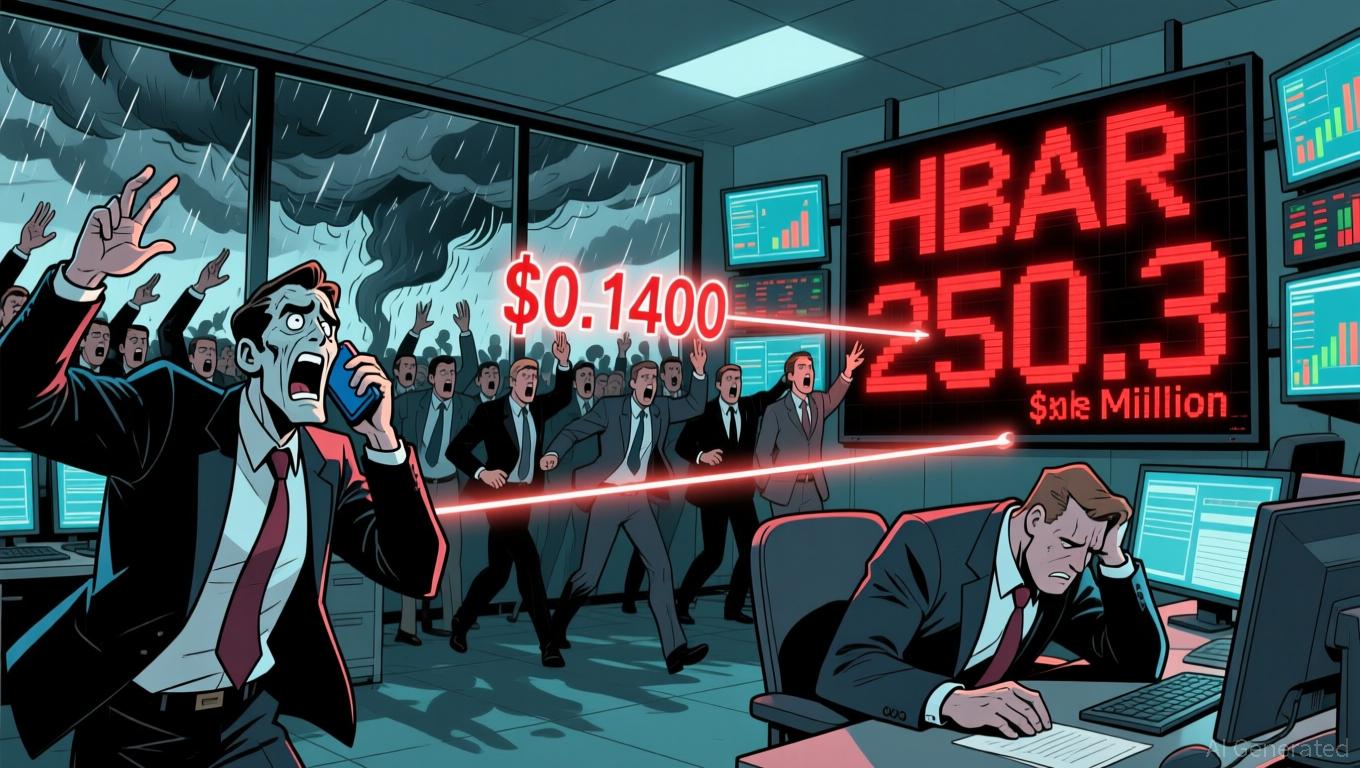The Factors That Led to Bitcoin’s Sharp Decline at the End of 2025
- Bitcoin's late-2025 crash stemmed from Fed rate hikes, regulatory ambiguity, and institutional risk aversion despite adoption growth. - The Fed's hawkish stance reduced liquidity, pushing investors toward fixed-income assets while SEC's inconsistent enforcement deepened uncertainty. - Institutional Bitcoin holdings (3.5% circulating supply) couldn't offset sell-offs as macroeconomic pressures and legal vacuums triggered hedging strategies. - Market participants now prioritize rate-hedging tools, regulato
Macroeconomic Pressures: The Fed’s Tightening Grip
The Federal Reserve’s approach to interest rates played a pivotal role in Bitcoin’s late-2025 decline. Despite rate reductions in September and October 2025, officials like Boston President Susan Collins indicated a reluctance to ease further, pointing to ongoing inflation and the risks of acting too soon
Rising interest rates generally make non-yielding assets like Bitcoin less attractive, as investors shift toward fixed-income products with assured returns. The Fed’s hesitance to lower rates further also tightened overall market liquidity, intensifying risk-averse behavior. As Collins noted,
Regulatory Uncertainty: The SEC’s Ambivalent Role
What was once a supportive regulatory environment for Bitcoin adoption became a source of instability by late 2025. The U.S. Securities and Exchange Commission (SEC) significantly scaled back its enforcement in fiscal year 2025, initiating
Although the SEC’s lighter touch could have been seen as a positive for the sector, the absence of clear rules—especially regarding stablecoins and derivatives—added to the volatility. The GENIUS Act brought some clarity for stablecoins, but with the CLARITY Act still pending, regulatory gaps persisted
Institutional Sentiment: Adoption vs. Risk Aversion
Despite strong institutional interest in Bitcoin, it was not enough to prevent a widespread sell-off. By late 2025, digital asset treasury firms (DATs)
The SEC’s decision to drop its case against SolarWinds and its chief security officer in November 2025 further illustrated the agency’s changing focus,
Implications for Crypto Asset Strategies
The late-2025 downturn highlights the importance for crypto investors to temper optimism with prudence. While institutional involvement and regulatory advances remain supportive, the combination of tighter monetary policy and regulatory uncertainty calls for a more sophisticated strategy. In the upcoming quarter, investors should focus on:
1. Managing Interest Rate Exposure: Allocating part of their crypto holdings to yield-generating stablecoins or Bitcoin derivatives to offset rate risks.
2. Staying Alert to Regulatory Shifts: Keeping a close watch on the CLARITY Act and any changes in SEC enforcement that could spark renewed volatility.
3. Broadening Institutional Diversification: Avoiding overconcentration in single assets and considering multi-asset crypto portfolios to cushion against sector-specific disruptions.
Conclusion
Bitcoin’s late-2025 decline was not due to a flaw in the asset itself, but rather the result of broader forces—Federal Reserve policy, regulatory ambiguity, and institutional caution—that temporarily overshadowed its fundamentals. As the market adjusts to these dynamics, the future will depend on whether economic stability and regulatory clarity can once again take center stage. For now, investors must steer through an environment where hope and caution must coexist.
Disclaimer: The content of this article solely reflects the author's opinion and does not represent the platform in any capacity. This article is not intended to serve as a reference for making investment decisions.
You may also like
Hyperliquid News Today: Reduced Fees or Doubts? Hyperliquid’s Bold Strategy for Expansion
- Hyperliquid, a top-20 DeFi exchange, faces a 25% HYPE token price drop to $25 amid market volatility and declining investor confidence. - Its HIP-3 Growth Mode initiative slashes trading fees by 90% to attract new markets but has yet to reverse downward trends or boost liquidity. - Analysts warn fee cuts may not address long-term user retention challenges in a crowded DeFi landscape dominated by centralized rivals like Binance. - Market skepticism persists as traders await volume explosions and tighter s
Bitcoin News Today: Bitcoin ETFs See $2.96B Withdrawals as Investors Seek Greater Macro Certainty
HBAR Drops 11.5%: Institutional Withdrawals and Liquidity Challenges Highlight Market Vulnerability
- HBAR token plummeted 11.5% on Nov 21 as institutional selling overwhelmed markets, breaking key support at $0.1350 and triggering stop-loss cascades. - Preceded by prior declines including 6% drop on Nov 18 and 180%+ volume spikes, forming descending channel patterns signaling deteriorating market structure. - Liquidity crises emerged with 250M-token sell wave (98% above average) and trading halts, exposing fragile infrastructure amid crypto market cap falling below $2.9T. - Institutional distribution do

Bitcoin News Update: Bitcoin Miners Expand into AI and Leverage Tax Regulations to Withstand Market Volatility
- Bitcoin miners leverage tax depreciation and AI/HPC diversification to offset market volatility and regulatory risks. - Canaan and Hive report revenue surges (104% and 285% YoY) through mining equipment sales and expanded operations. - Industry faces challenges including $43M cash burn at American Bitcoin and U.S. probes into Chinese ASIC suppliers like Bitmain. - Strategic shifts to AI hosting (e.g., Hive's $140M pipeline) and Texas facility expansions aim to reduce Bitcoin price dependency. - Tax refor
